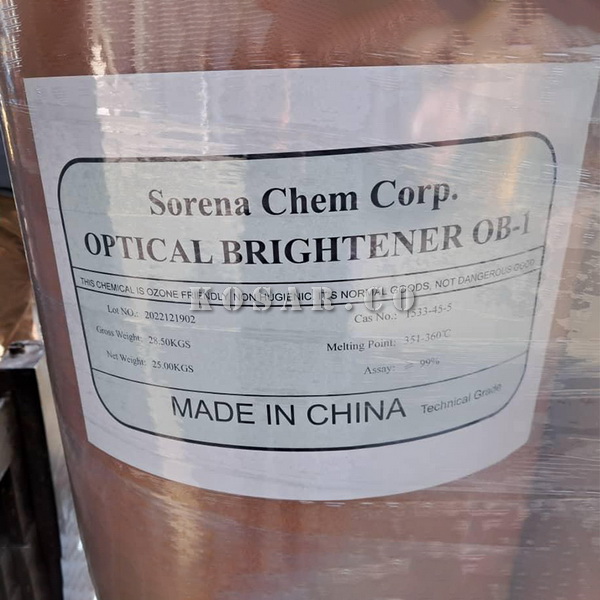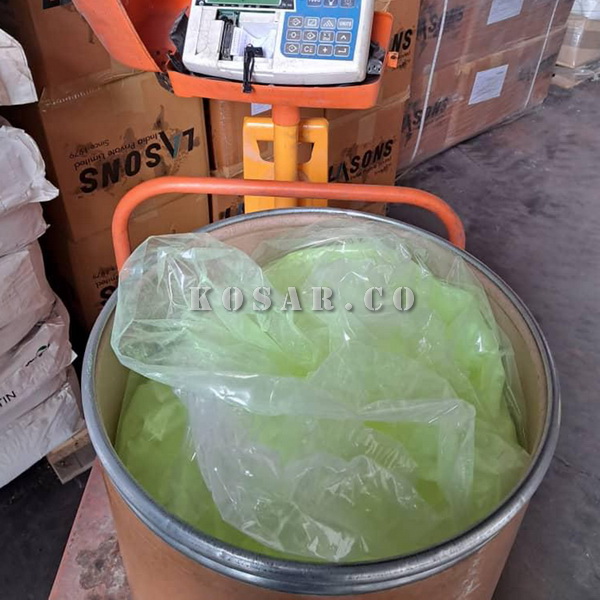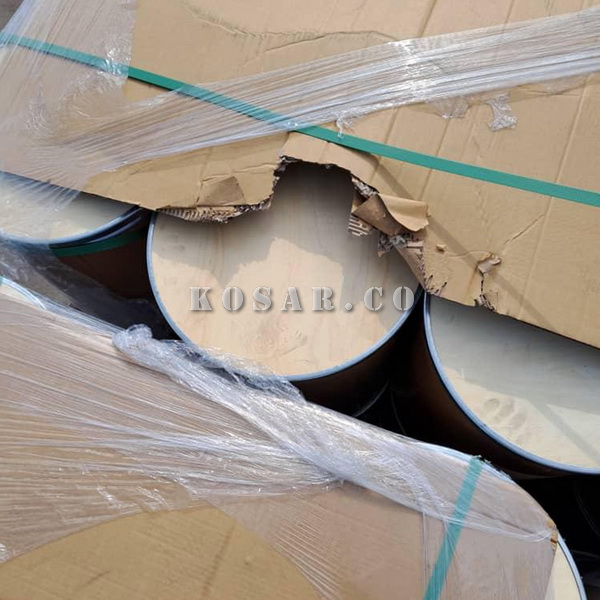Optical Brightener OB1
جهت سفارش لطفا تماس بگیرید
Optical Brightener OB1 Details

- Product: Optical Brightener OB1
- Grade: OB1
- Second title: -
- Unit: Kg
- Producer: China
- Packing: 25Kg/Drum
- TDS: Download TDS Downloads :1211
A comprehensive usage guide OPTICAL BRIGHTENER OB-1| Increase brightness and transparency
Optical Brightener OB-1 or Brightener OB-1 is a high molecular weight fluorescent whitening agent, which significantly improves the whiteness in both textile fibers and plastics.
Optical Brightener is a high-molecular-weight fluorescent whitening agent that significantly improves the whiteness of both textiles and plastics. This material has many applications in various industries, including the production of artificial stone and polyester fibers.Optical Brightener is a high-molecular-weight fluorescent whitening agent that significantly improves the whiteness of both textiles and plastics. This material has many applications in various industries, including the production of artificial stone and polyester fibers.
Brightener OB1 produces a very brilliant white with light reddish Blue effect which compensate for yellowing. It has good light fastness. Because of its exceptional whitening properties, excellent resistance to heat, low volatility and easy dispersibility, Optical Brightener OB-1 is now widely used in plastic market. OB-1 has good compatibility in various substrates; in combination with dyes, it produces bright shades. Brightener OB1 is used in polymer fibers especially polyester and polyamide fibers. It is also widely used in PP, ABS, PS, HIPS, PA, PC, EVA, Rigid PVC etc.

Buy and sell optical brighteners.
Buying and selling optical Optical brightener is done through different suppliers, distributors, or specialized producers of chemicals. To buy optical brighteners such as OB-1, you can contact Kosar Chemical Parsian Company, which is a wholesale and direct sales reference for optical brighteners, and search for the price of optical brighteners in markets that specialize in chemical products. Always ensure the credibility and authenticity of the seller before buying.
To purchase Optical Brightener OB-1 or any similar chemical product, consider these steps:
- Research and identify suppliers: Look for suppliers, distributors, or chemical manufacturers that deal with optical brighteners. Explore online directories, trading platforms, or industry-specific websites that list such suppliers. The Kausar Shimi Parsian site provides complete information on this matter.
- Get in touch with producers or distributors: Get in touch with reputable producers or distributors of optical brighteners. Find more about optical brightener costs, minimum order amounts, shipping choices, and product availability. Use the free consultation offered by Kausar Shimi Parsian Company's optical brightener sales professionals by giving them a call at 02143462000.
3. Credit check: Verify the optical supplier's reputation and dependability by looking through their references, track record, and any professional associations or certifications they may hold. This promotes the quality of the goods and services. Investing in a high-quality, reasonably priced optical brightener can make you happy. Since Kausar Chemical Parsian Company is a direct importer of optical brightener and has a solid track record in the paint and resin raw material, plastic, and polymer raw material markets, it can provide you with optical brightener OB1 at the best price guaranteed.
- Ask for optical brightener (TDS) specifications: Request samples or detailed technical specifications (data sheets) for optical brighteners to confirm their suitability for your needs. This allows you to evaluate its quality and compatibility with your intended use.
- Negotiation, optical brightener price inquiry and finalizing the purchase :Once you're satisfied with a supplier, negotiate terms, including price, payment methods, shipping, and delivery times. Clear any doubts or concerns before finalizing your purchase. You can also consider buying optical brightener online
- Compliance and Safety: Make sure you comply with any regulations or safety standards related
- .Documents: Keep records of all communications, contracts, invoices and other documents related to the purchase for future referenceto the purchase and handling of chemicals in your area.

Effect of Optical Brighteners on the whiteness of Polymers:
Optical brighteners function by absorbing ultraviolet radiation and re-emitting blue light. The emitted blue light will reduce the yellow color of a polymer. In the presence of a whitening agent, such as Ti02, the use of OB1 will produce a brilliant white or "whiter than white' appearance. Two primary factors affect the whiteness/ yellowness of a formulation. They are the color of the base polymer and the level of brightener added. This level might be as little as 25 - 50 ppm. In determining the optimum concentration of brightener, the effect of any other UV absorbing materials in the plastic should be considered. It is important that users perform sufficient evaluations to determine the optimum level of OB1 for their specific end uses.

Methods of Addition:
To be effective, an optical brightener must dissolve in the polymer to which it is added. Since the typical addition levels for OB1 is in the range of 100 - 400 ppm, the use of a concentrate, or masterbatch, is recommended. Concentrates containing 1% - 10% by weight of OB -1 are typical.
The concentrate can be produced on an extruder using normal processing conditions for the polymer, including drying if necessary. The concentrate is then let down to typical use levels in the final formulation. Plastics compounding equipment is normally adequate for producing OB-1 brightener formulations. The key requirement is to thoroughly disperse the brightener so that it will dissolve uniformly throughout the molten polymer. This is usually achieved most readily with a concentrate.
Improving Whiteness of Recycled Polymer:
The business of processing post-consumer plastics and waste polymers continues to grow. These materials can be recycled into a variety of useful products, from plastic lumber to synthetic fiber. Polyester bottle polymer, polyester plastic waste, and waste fiber polymer can be recycled into polyester fiber that can be used m carpets, filling and insulation material, non-woven, and apparel. One of the shortcomings of processing these materials is the uncertainty of the color of the source material.
By using optical brighteners, the value of the recycled materials can be significantly enhanced by providing a more uniform white. OB-1 will greatly improve the whiteness. Normal fiber applications require only 200-300 ppm in new polymer, but recycled material may require as much as 300-450 ppm. Optical brighteners are very effective in improving the appearance of the polymer or fiber. Off-class or second-quality nylon polymer can also be improved in the same way.

Food Industry Applicable:
OB-1 complies with regulations for indirect food additives. Brightener OB1 is restricted to use as an optical brightener for all polymers at a level not to exceed 0.025% by weight of polymer and at a temperature not exceeding 135 °C (275 °F).